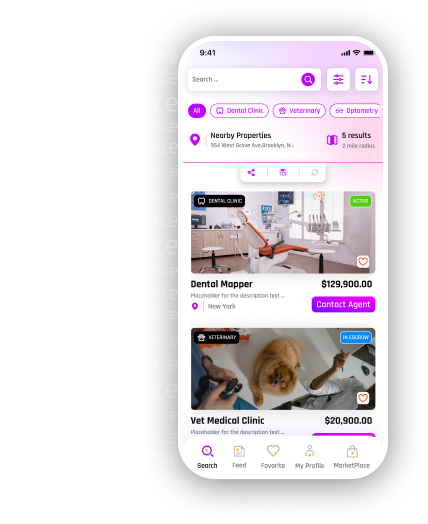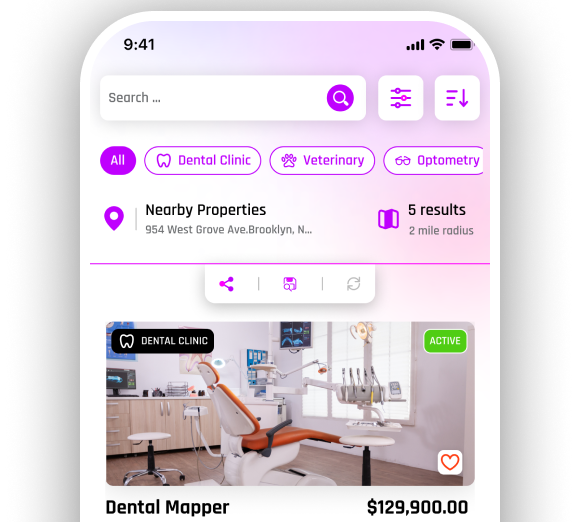How to Compete with Big-Box Optical Stores

Independent optical practices face a unique challenge in today’s marketplace: competing with big-box chains that dominate with aggressive pricing, large marketing budgets, and brand recognition. While these large retailers may seem intimidating, independent practices still hold a competitive edge where it matters most—personalized care, quality, and strong community connections. With the right strategies, you can level the playing field and thrive in this evolving industry. For optometrists and practice owners, learning how to adapt is key to securing long-term growth in a market where the value of an optometry practice for sale can hinge on strong differentiation.
Why Big-Box Optical Stores Dominate the Market
Before diving into strategies, it’s important to understand why these stores are so successful:
-
Economies of Scale – They buy in bulk, reducing costs and allowing for lower prices.
-
Brand Recognition – Big-box retailers leverage their national presence to attract patients easily.
-
Convenience Factor – Many chains offer one-stop shopping with quick turnaround times.
-
Aggressive Advertising – Their marketing campaigns often overshadow smaller practices.
But here’s the truth: bigger doesn’t always mean better. Independent practices can stand out by offering what large chains can’t—customized patient experiences, community trust, and higher-quality service.
The Dos: Strategies to Compete Successfully
To stay competitive, independent optical practices must focus on what makes them unique while addressing patient expectations head-on.
1. Do Focus on Personalized Care
Big-box stores can’t replicate the personal touch of an independent practice. Spend time understanding your patients’ unique vision needs and lifestyle preferences. Offer tailored solutions instead of one-size-fits-all recommendations. Patients are more likely to remain loyal when they feel truly cared for.
2. Do Offer Specialized Services
Expand beyond basic eye exams and glasses. Services like advanced diagnostics, contact lens fittings, and dry eye treatments allow you to carve out a niche. Specialty offerings make your practice harder to compare with chain competitors.
3. Do Invest in Technology
Cutting-edge diagnostic tools and digital lenses position your practice as forward-thinking. Patients appreciate advanced care and are willing to pay more for accuracy and comfort. The right optometry equipment for sale not only improves patient outcomes but also boosts the overall value of your practice.
4. Do Build Strong Community Relationships
Get involved in local events, sponsor school programs, or host free vision screenings. Community engagement creates brand loyalty that no large retailer can replicate. Patients often prefer supporting a business that actively contributes to their neighborhood.
5. Do Strengthen Your Online Presence
Patients often search online first when choosing a provider. Ensure your website is user-friendly, your Google profile is updated, and your social media highlights success stories and patient experiences. A robust digital presence gives you credibility and visibility.
The Don’ts: Mistakes That Can Hurt Your Practice
While strengthening your position, avoid common pitfalls that can weaken your competitive edge.
1. Don’t Compete on Price Alone
It’s tempting to slash prices to compete with big-box chains, but this often backfires. Focus instead on value—better quality frames, superior service, and personalized follow-ups that justify your pricing.
2. Don’t Ignore Marketing
Assuming patients will come just because you provide excellent care is a mistake. Without consistent marketing, even the best practices struggle to grow. Invest in targeted campaigns that highlight your strengths compared to big-box retailers.
3. Don’t Neglect Patient Experience
Long wait times, poor communication, or rushed visits push patients toward competitors. Prioritize efficiency and create a welcoming environment where patients feel valued.
4. Don’t Overlook Staff Training
Your team is the face of your practice. Without proper training in customer service and product knowledge, patient satisfaction can suffer. A well-trained staff makes your practice feel polished and professional.
5. Don’t Delay on Adaptation
The optical market is evolving quickly. Ignoring industry trends like tele-optometry or digital eyewear solutions could leave your practice behind. Stay flexible and open to innovation.
Leveraging Differentiation as a Competitive Weapon
Big-box retailers thrive on volume, but independent practices thrive on differentiation. Focus on creating an environment where patients feel the difference immediately upon walking in. This could include:
-
Offering boutique, high-quality eyewear lines not found in chains.
-
Providing detailed consultations instead of quick exams.
-
Using advanced imaging to educate patients on their eye health.
When patients perceive higher value, they’re willing to choose your practice even if prices are higher. And when it comes time to list your practice as a private practice for sale, differentiation is what makes buyers take notice.
Financial Strategies for Staying Competitive
Competing successfully isn’t just about patient experience—it’s about financial health. Consider these strategies:
-
Explore Practice Financing – Use financing options to invest in modern technology or expand services without straining cash flow.
-
Negotiate with Suppliers – While you may not match big-box pricing, negotiating smart contracts with suppliers can help lower costs.
-
Build Recurring Revenue Models – Offer subscription plans for exams, contact lens delivery, or dry eye treatments to ensure predictable income.
A financially stable practice is more resilient against market fluctuations and better positioned for future growth.
Long-Term Outlook for Independent Optical Practices
While big-box optical chains will always have a presence, the demand for personalized, relationship-driven care continues to grow. Patients are increasingly seeking providers who prioritize their well-being over sales volume. By focusing on your strengths, you not only compete effectively now but also increase your practice’s future value.
In fact, practices that combine excellent patient care with diversified services often command higher valuations in healthcare mergers and acquisitions. For optometrists considering their long-term trajectory, building a strong competitive strategy now will pay dividends later.
Compete Where Big-Box Stores Can’t
Big-box retailers may win on price and scale, but independent optical practices can win where it matters most—relationships, expertise, and personalized care. By avoiding common mistakes, investing in differentiation, and strengthening both patient experiences and financial strategies, you can thrive alongside even the largest competitors.
Your practice isn’t just another provider; it’s a trusted healthcare partner. And when it’s time to think about succession or listing your optical business for sale, the value you’ve built through loyal patients and high-quality care will set you apart from chain retailers.
Final Takeaway
Competing with big-box optical stores isn’t about being bigger—it’s about being smarter. With the right mix of patient-centered strategies and smart business planning, you can secure your practice’s future.
The PracticeFinder App helps you stay competitive by streamlining valuations, connecting you with trusted advisors, and preparing your practice for long-term success. Download the app today and give your practice the competitive edge it deserves.

